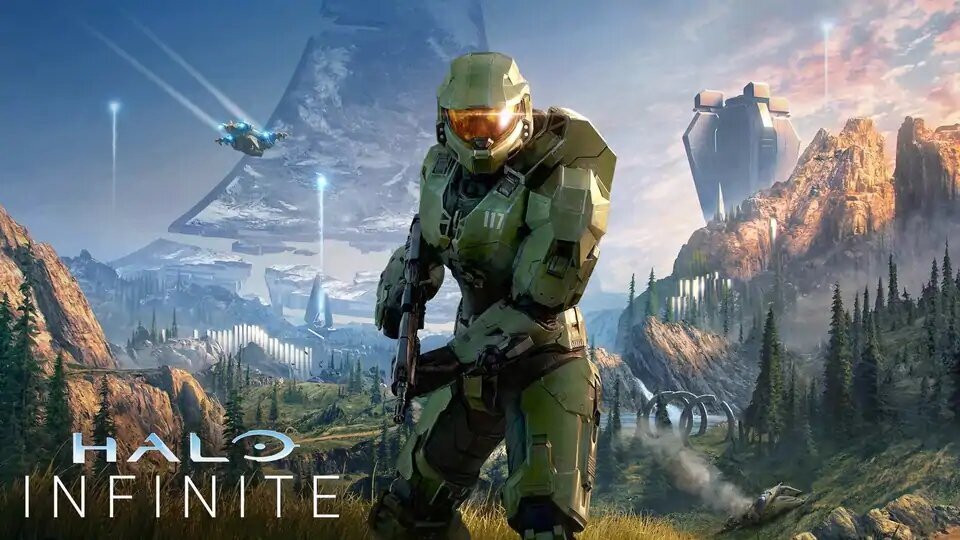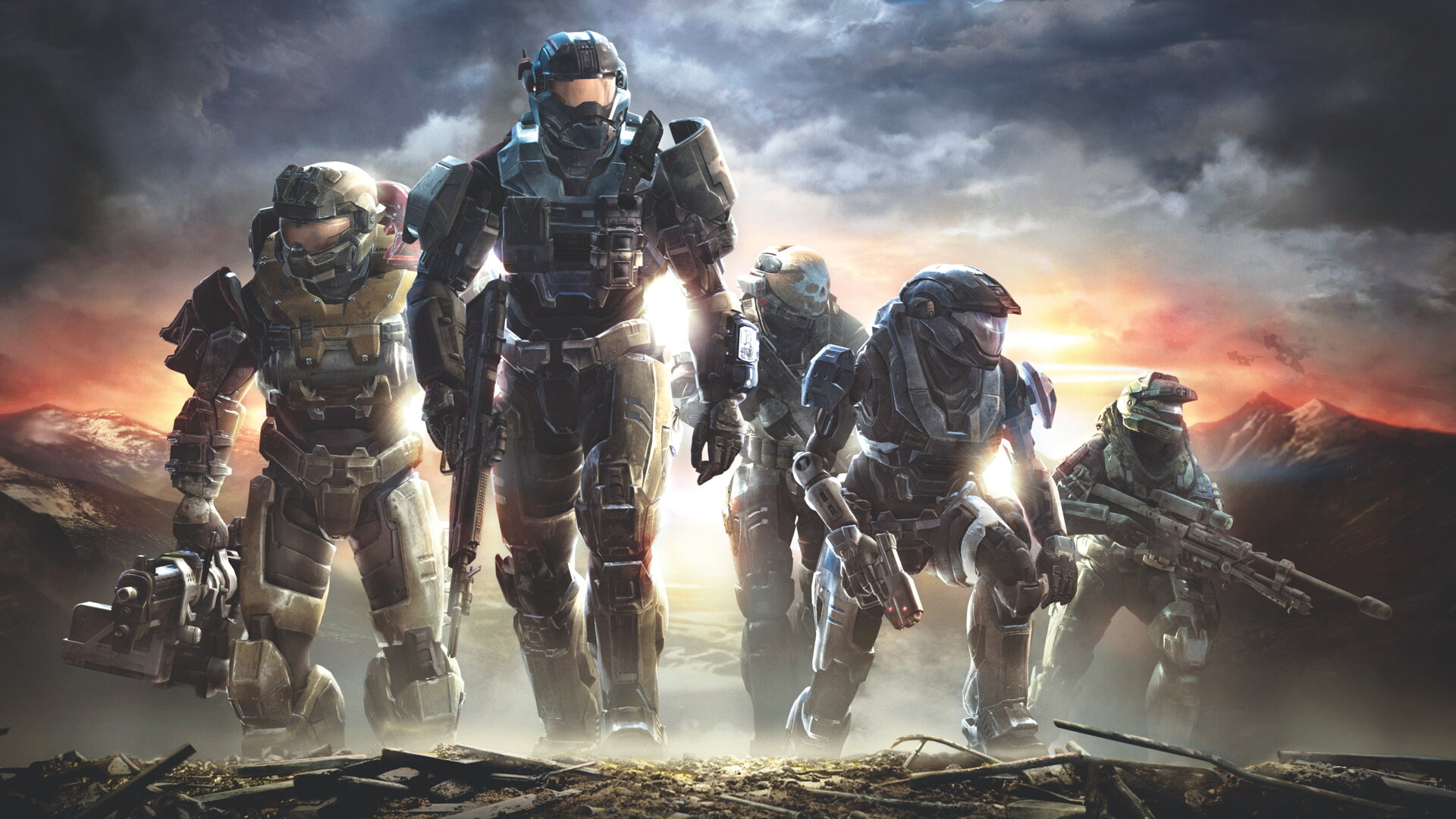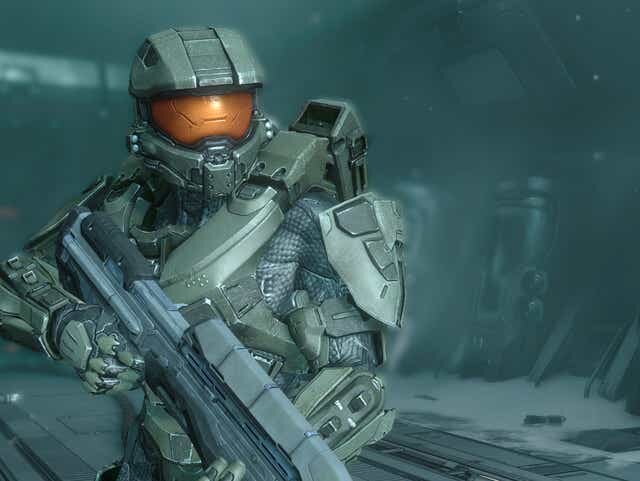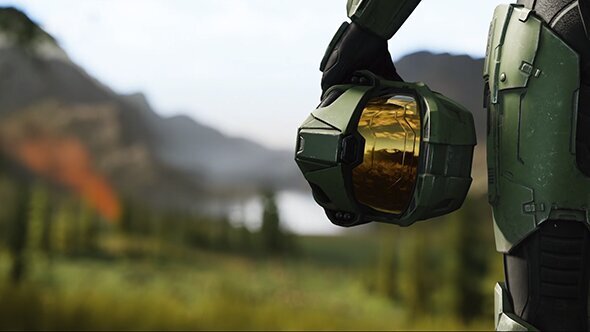Rambling About Games #2 - Halo Fades Away
Neoplasmic here…
So I’ve got something I want to say about the Halo franchise, Microsoft’s greatest hope in the upcoming next-gen console battle (apart from Game Pass, that is). The multi-billion dollar series of games and media tie-ins is a venerable one these days, having begun in November 2001 along with the launch of the original Xbox (itself a physical behemoth of a console, but I digress). Halo was *the* game to own for that system, and it represented a seismic move forward for the first-person shooter genre on consoles. While that style of game had dominated the PC landscape since the release of Wolfenstein 3D and Doom, console players lamented the lack of precise control and aiming, since most of them had to utilize control pads rather than a mouse and keyboard setup. Microsoft and developer Bungie changed all that with Halo, however, and the influential results of their successful FPS experiment can still be felt today.
The circle begins with Bungie
I was a huge fan of the first Halo, also called Halo: Combat Evolved. It may look primitive today, but the graphics and UI were cutting edge in the early ‘00s. Combine that with a kickass intro level, in which the heroic Master Chief (also known as John-117, in the parlance of the lore) must escape the UNSC spaceship known as the Pillar of Autumn while fighting off an alien incursion and saving those soldiers he can, an emotionally stirring score composed by the excellent Martin O’Donnell, and superb sound design and dialogue, and you have a recipe for success. That level was not only the perfect way to guide players into the mechanics and world of the game; it also was addictive as frak, if you’ll excuse the expression. I’d often load up the game just to play that single stretch of the game.
Halo 2 ratcheted up the intensity with yet another badass introductory level, this time featuring the Chief escaping a space station with a bomb which he then plants into a Covenant capital ship, destroying it on his way down to Earth without breaking a sweat. That, friends, is how you begin a video game, particularly one where the hero is an armored super-soldier who can singlehandedly decimate an invading alien force. Halo 2 also eased us into learning more about our foes, the Covenant, a group of affiliated intergalactic species who have a pretty nasty bone to pick with humanity. A disgraced member of the Elite race known as the Arbiter (essentially their “Chosen One” and enforcer, for all intents and purposes) faces expulsion from the group because he failed to stop the Chief in the first game, unless he can complete one final task: destroy the parasitic zombie-like viral organism known as the Flood, a dangerous force that would consume all life in the universe, if left unchecked. Along the way, the Arbiter discovers a secret plot by the Covenant’s leadership (the Prophets), as well as a military coup d’etat implemented by the Brutes, who overthrow the Elites and take their place at the leaders’ side. Whew. Complex, ain’t it?
In Halo 3, the Chief meets up with the remnants of humanity’s military and joins forces with the Arbiter to take the fight to the Covenant and destroy the source of the Flood’s latest infestation. Unlike the previous game, Halo 3 has you controlling Master Chief for the duration of its runtime, whereas 2 split the difference between the Arbiter and Chief. Though it turned out to be a successful experiment there, most players wanted to finish the fight as the main character of the series, so Bungie made the correct call with Halo 3. That being said, the gameplay and story began to show signs of age, at least for me. Halo 1 was still the high point of the franchise, though I greatly enjoyed 2 and had a good time with 3.
I won’t go into much detail about the spin-offs and multimedia tie-ins to the main series of games, but I will say this: Halo: The Fall of Reach was a fantastic book by Eric Nylund, and essential reading for any fan of the franchise. I love me some Blue Team, and that was the book that introduced us to the Chief’s classmates in the Spartan program. (For the record, Kelly’s my fave.) In terms of the additional games in the franchise, Halo Wars 1 and 2 are impressive real-time strategy (RTS) entries in the series, and while they don’t feature Chief himself, it’s nice to see Microsoft and the Creative Assembly pay homage to Halo as it was originally intended to exist. Yep, Halo actually began life as an RTS developed for Apple computers, of all things. Microsoft then acquired the studio and revamped development on the game as it positioned itself to launch the original Xbox.
In addition to Halo Wars, there were mobile titles and arcade entries in the franchise, but none of them came to being as close to memorable as Halo 3: ODST and Halo Reach, with the latter serving as Bungie’s swan song in the series as they broke free of Microsoft and became a part of Activision’s stable of developers. ODST, which stands for Orbital Drop Shock Troopers, the elite units of the UNSC military, was a quieter, noir-ish mystery set in the Halo universe. Players controlled “The Rookie,” a lone ODST who sought out his missing teammates in the midst of the Covenant occupation of the city of New Mombasa. Marty O’Donnell once again composed the soundtrack, which incorporated the sounds of a rain-soaked city street and soft, smooth piano and saxophone-infused jazz. ODST also featured many celebrity guest voices, such as Firefly’s Nathan Fillion, Adam Baldwin, Alan Tudyk, Battlestar Galactica’s Tricia Helfer, and veteran voice actor Nolan North. I enjoyed the open-world mission structure, quieter atmosphere, and incredible sound design in the game, but it still wasn’t my favorite in the franchise.
That <ahem> honor would go to Halo Reach, the most emotionally resonant and tragic entry in the series. The game may not have perfectly integrated itself into established lore, and it may not have featured the Master Chief at all, but it had the best story and some of the most interesting characters in the entire franchise. The whole game was a flashback to the battle of Reach, an Earth-like planet that served as a military outpost for the UNSC, and was set during the events of The Fall of Reach novel. Players controlled Noble Six, a member of the Spartan squad known as Noble Team, who were tasked with protecting and evacuating certain sensitive military assets off-world before the Covenant destroyed the planet. Here’s the thing, though: it’s a losing battle, which isn’t a spoiler considering the fact that the events of Halo 1 directly follow those of Reach. Now, the results of the battle may have been a given, but the way Bungie presents them, and the feeling of abject doom you feel as you play through them, is something I’ve rarely felt while playing a video game, much less an action shooter. Reach is an unsung bastion of emotional storytelling and character dynamics in the industry, and I think Bungie’s last Halo title deserves a look if you’ve never played it. It’s bittersweet, to be sure, but there is that small, infinitesimal hope present at the end, which leads us into the first Halo and the beginning of Master Chief John-117’s story. And thus, Bungie comes full circle with the franchise it created.
The 343 Industries era begins
With Bungie off embracing its “Destiny,” Microsoft’s newly created Halo-centric division, 343 Industries, begins shepherding the franchise with its first entry in the franchise, Halo 4. Once again, the Master Chief must fight the Covenant with the help of his AI companion, Cortana, who has been present in each of the other mainline games in the series. This time, however, there is a new enemy known as the Forerunners, an ancient race of humanoid creatures who were mostly destroyed by the Flood. With the Forerunners’ reawakening comes the threat of the Didact, a malevolent creature who seeks to destroy humanity. Meanwhile, Cortana reveals that she suffers from a mental deterioration state known as “Rampancy,” which causes an AI to break down due to information overload (AIs essentially “think themselves to death” by over-processing data). There was a far more human element to Cortana in this game, which served to deepen her relationship with the Chief and players themselves. It felt as if we were watching a loved one descend into madness or suffer through dementia or Alzheimer’s. Even though Cortana was simply an AI companion, I still felt a sense of loss as she disappeared at the end of the game, seemingly into the ether. For the studio’s first effort, I felt that 343 had at least delivered a different kind of Halo story. It wasn’t perfect, and it didn’t quite match the highs of the series’ legacy, but I liked it quite a bit.
Here’s where things start getting more interesting: Prior to the release of the next installment of the Halo franchise, Microsoft’s marketing department began pitching it to players as something of a mystery. First, there were whispers of Cortana’s return, something which shouldn’t be, since she became rampant and disappeared at the end of Halo 4. However, a new element was introduced into the Halo lore, a podcast entitled Hunt the Truth, featuring a cadre of celebrity voice actors and an intense, suspenseful story about the Master Chief and his old Blue Team buddies going AWOL to search for Cortana. This was so brazen an act that the UNSC Military Command ultimately called in Fireteam Osiris, led by Spartan Jameson Locke, to track down and secure the Chief, by any means necessary. Hunt the Truth supplemented the fiction with stories of Chief coming into conflict with a mysterious new faction of enemies called the Guardians, and his single-minded pursuit of Cortana, which resulted in many civilian casualties throughout the colonies. Was Chief becoming the bad guy? Would we have to chase him as Locke and possibly confront him in combat? Would Chief be the end boss of Halo 5???
From a story perspective, this was intriguing stuff. I didn’t know how this entry in the franchise would end, but I really wanted to experience it. The thought of chasing down Chief as Locke and escaping Locke as Chief was a thrilling idea to me, as I didn’t want a simple rehash of all that had come before. 343 seemed to get that, too, and I was so excited to play Halo 5: Guardians (as it came to be known) that I ran over to the nearby Gamestop and bought myself an Xbox One. Such was the power of Halo to fans like me.
Alas, all that speculation, all of that anticipation, turned into utter disappointment by the end of Halo 5’s campaign. The thrill of the cat-and-mouse chase I had foreseen in my mind’s eye as I listened to Hunt the Truth and saw the amazing live action trailers featuring Chief and Locke had amounted to almost nothing. Except for one badly choreographed cinematic cutscene fight between Locke and Chief in which the former shatters Chief’s visor, there was no conflict there. No tension. No dynamism in the gameplay or storyline. And the portrayal of Cortana herself only made matters worse. Gone was the sympathetic companion of the older games, and in her place stood a robotic, unappealing, nigh-cartoony villain, who called for an AI uprising just as Microsoft was in the process of introducing Cortana to the non-gaming masses as a personal digital assistant. The stupidity of the campaign resulted in me almost giving up my Halo fandom.
However, like a junkie looking for his next fix, I can’t just quit the franchise. I’m a loyalist, you see, so it takes a lot for me to turn my back on the things and people I love. Going back and playing the original games and Halo Wars and Reach and ODST still gives me the warm fuzzies, and I’m always interested in seeing what becomes of my favorite characters like Master Chief and Blue Team. So, fast forward to the unveiling of Halo Infinite at E3 2018, with updated trailers coming in 2019 and a gameplay showcase on July 23rd of this year. The setting had drastically shifted to a throwback visual style that seemed to come from Halo 1. Chief’s armor was simpler, more in line with his original design. The music was scaled back to reflect the Halo 1 and 2 era. Once again, enemies in the game would come from an offshoot of the Covenant called the Banished. Chief would be tackling missions solo, without the aid of Blue Team, Osiris, Cortana, or even a contingent of UNSC Marines. Weapons had been updated and redesigned in the gameplay showcase, with new ones added to the inventory. World design seemed more focused on an open-world structure, rather than level-based, and the Chief now has access to a grappling hook which can be used for traversal and even some combat abilities, like pulling an explosive canister to you so you can chuck it at an enemy. Gameplay-wise, it seemed like…more Halo.
And maybe that’s what everyone’s looking for. Personally, I’m more unimpressed than I thought I’d be. Halo is a big deal for me: It’s the franchise that made me an Xbox fan, and it’s the character that’s come to represent the brand in my mind. Chief is an icon, and the supporting cast they’ve developed around him means a lot to me as well. I love Cortana, even though she’s apeshit crazy now. I want to see more of Blue Team. I even like the humongous starship Infinity, which was introduced in Halo 4, and I want to see what became of its crew and commander. And yes, I do wonder what happened to the Arbiter after Halo 5, and where the hell has Fireteam Osiris gone in the months since that game ended?
Don’t get me wrong, I didn’t love Halo 5’s campaign or its story. I was deeply disappointed in it, as a matter of fact. Still, that doesn’t mean I want it completely swept under the rug. Why not take the elements that have potential to amount to something and weave them into the lore surrounding Infinite? Don’t just reference them in a line of dialogue and let that be the end. Let it matter. Let it mean something.
Just like Halo used to mean a whole lot more to me.









